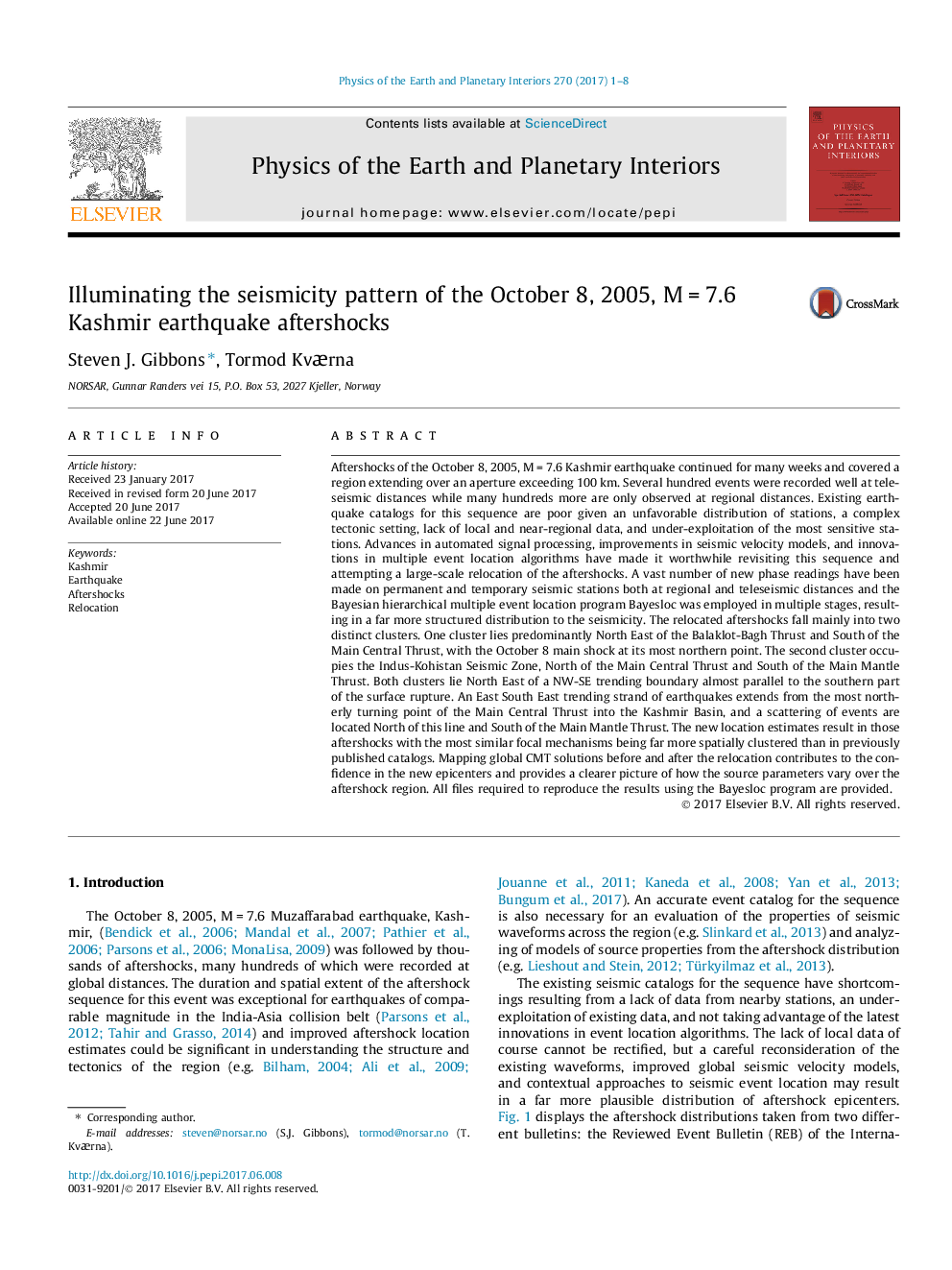| کد مقاله | کد نشریه | سال انتشار | مقاله انگلیسی | نسخه تمام متن |
|---|---|---|---|---|
| 5787275 | 1641470 | 2017 | 8 صفحه PDF | دانلود رایگان |
عنوان انگلیسی مقاله ISI
Illuminating the seismicity pattern of the October 8, 2005, MÂ =Â 7.6 Kashmir earthquake aftershocks
دانلود مقاله + سفارش ترجمه
دانلود مقاله ISI انگلیسی
رایگان برای ایرانیان
کلمات کلیدی
موضوعات مرتبط
مهندسی و علوم پایه
علوم زمین و سیارات
فیزیک زمین (ژئو فیزیک)
پیش نمایش صفحه اول مقاله

چکیده انگلیسی
Aftershocks of the October 8, 2005, MÂ =Â 7.6 Kashmir earthquake continued for many weeks and covered a region extending over an aperture exceeding 100Â km. Several hundred events were recorded well at teleseismic distances while many hundreds more are only observed at regional distances. Existing earthquake catalogs for this sequence are poor given an unfavorable distribution of stations, a complex tectonic setting, lack of local and near-regional data, and under-exploitation of the most sensitive stations. Advances in automated signal processing, improvements in seismic velocity models, and innovations in multiple event location algorithms have made it worthwhile revisiting this sequence and attempting a large-scale relocation of the aftershocks. A vast number of new phase readings have been made on permanent and temporary seismic stations both at regional and teleseismic distances and the Bayesian hierarchical multiple event location program Bayesloc was employed in multiple stages, resulting in a far more structured distribution to the seismicity. The relocated aftershocks fall mainly into two distinct clusters. One cluster lies predominantly North East of the Balaklot-Bagh Thrust and South of the Main Central Thrust, with the October 8 main shock at its most northern point. The second cluster occupies the Indus-Kohistan Seismic Zone, North of the Main Central Thrust and South of the Main Mantle Thrust. Both clusters lie North East of a NW-SE trending boundary almost parallel to the southern part of the surface rupture. An East South East trending strand of earthquakes extends from the most northerly turning point of the Main Central Thrust into the Kashmir Basin, and a scattering of events are located North of this line and South of the Main Mantle Thrust. The new location estimates result in those aftershocks with the most similar focal mechanisms being far more spatially clustered than in previously published catalogs. Mapping global CMT solutions before and after the relocation contributes to the confidence in the new epicenters and provides a clearer picture of how the source parameters vary over the aftershock region. All files required to reproduce the results using the Bayesloc program are provided.
ناشر
Database: Elsevier - ScienceDirect (ساینس دایرکت)
Journal: Physics of the Earth and Planetary Interiors - Volume 270, September 2017, Pages 1-8
Journal: Physics of the Earth and Planetary Interiors - Volume 270, September 2017, Pages 1-8
نویسندگان
Steven J. Gibbons, Tormod Kværna,